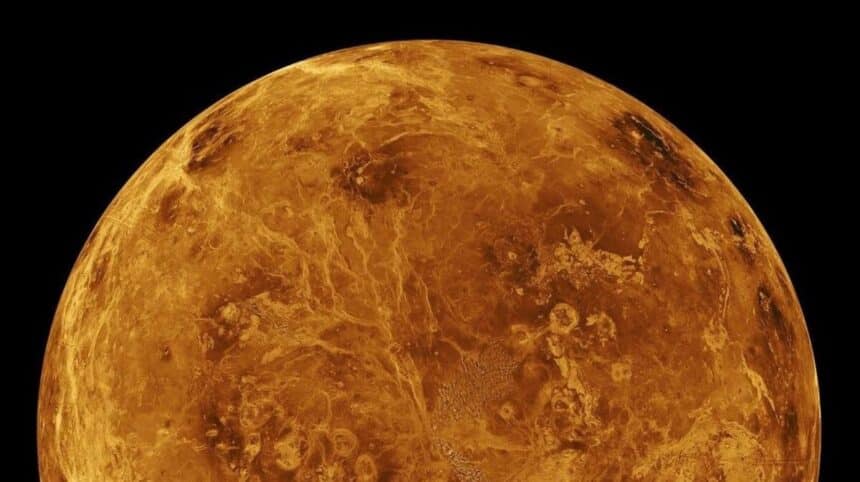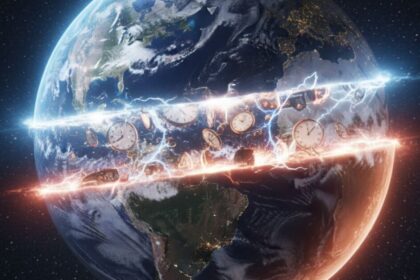Venus, cloaked in thick clouds and scorching heat, hides something utterly baffling on its rocky face. Scoured across its landscape are dozens of strange, quasi-circular scars called coronae. Some span hundreds of miles—stretching well past a thousand—while others are as modest as a few dozen miles wide. They look like chaotic scribbles etched into stone, each encircling a half-collapsed heart.
Why only Venus? After all, it’s our terrestrial twin—almost the same size, almost the same density, orbiting a similar distance from the Sun. Earth, meanwhile, is a living, breathing ocean world. So why doesn’t our blue planet wear these odd circular crowns?
A Planetary Laboratory
It turns out Venus might be offering us a glimpse into Earth’s own past. Before our planet fractured into moving plates, it too was wrapped in a single shell. Now Venus retains that unbroken crust. In effect, it’s a natural lab, showing us what Earth could have been like before plate tectonics began churning continents and recycling crust into the deep interior.
The puzzle of coronae has been hiding in plain sight ever since NASA’s Magellan mission snapped detailed radar images decades ago. At first glance, these features seemed like static scars of a dead world. But hints of still-active tectonics bubbled up from the data, whispering that Venus might not be as geologically “dead” as once believed.
Bubbles Beneath the Surface
One leading idea imagines massive blobs of super-hot material rising from the planet’s mantle. Picture a lava lamp on overdrive: blobs push against the crust, creating domes that later collapse into ringed depressions. Yet the coronae vary wildly in size, and a single giant blob doesn’t neatly explain dozens of features scattered across the globe.
That’s where the new study, fresh from the Proceedings of the National Academy of Sciences, stakes its claim. Madeleine Kerr of Scripps Institution of Oceanography and colleagues mapped how Venus’s mantle convects, traveling thousands of miles from core to crust. Their models introduce a twist: roughly 400 miles beneath the surface sits a “glass ceiling,” where shifting crystal structures block the rise of magma.
Instead of one colossal plume, the magma splinters into clusters—grapeshot of mini-plumes—that seep upward and burst through the crust in multiple spots. The result? A variety of coronae shapes and sizes, each one a unique signature of magma navigating an uneven barrier. This mechanism could finally explain why coronae on Venus range from modest to mind-bogglingly huge.
A Breakthrough on the Horizon
Could this be the plate-tectonics moment for Venus? Coauthor David Stegman says we’re on the brink of a revolution in understanding Venus’s inner workings—much like the seismic shift in Earth science during the 1960s, when the theory of plate tectonics rewrote textbooks.
There’s still work ahead. These models need more data—new missions, fresh measurements—to confirm whether the glass ceiling really exists and if the clustered plumes behave as simulated. But there’s a palpable excitement: we might soon stitch together a unifying theory that links Venus’s blistering surface to its molten interior.
So, next time you look up at that bright dot in the twilight sky, remember: Venus isn’t just Earth’s evil twin—it’s a key to our own planet’s early chapters. What other secrets are hidden beneath its clouds?
Join the conversation! Tell us what you think about Venus’s coronae in the comments below, and follow us on Facebook, Pinterest or Instagram for more out-of-this-world discoveries.
Mars grows a weird giant cloud every year—and scientists finally know why.
Sources:
- www.pnas.org/doi/10.1073/pnas.2504491122
- www.today.ucsd.edu/story/an-explanation-for-the-look-of-venus-mysterious-surface
- www.jpl.nasa.gov/news/nasas-magellan-mission-reveals-possible-tectonic-activity-on-venus/
Articles from MyViralBox’ contributors and guest bloggers.









